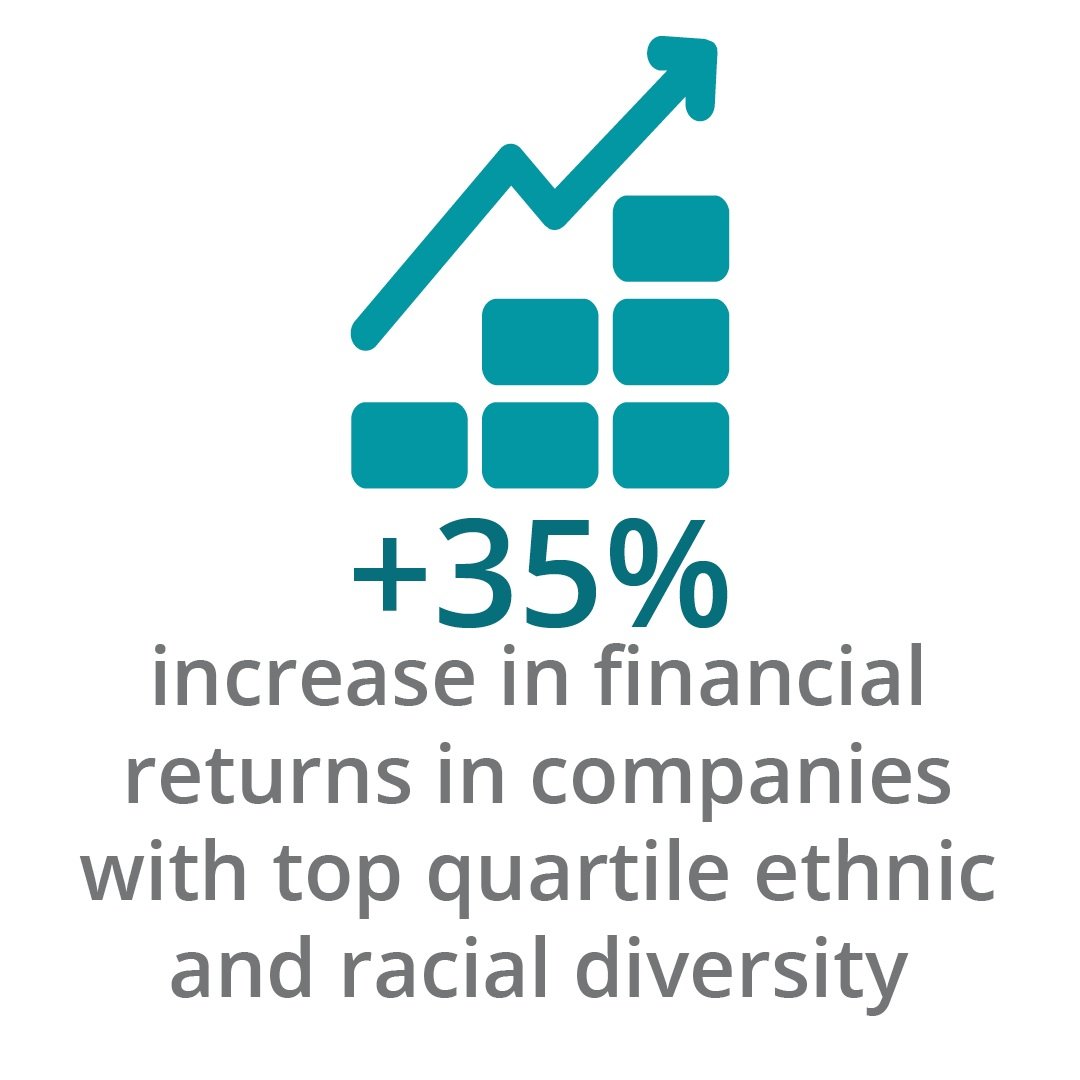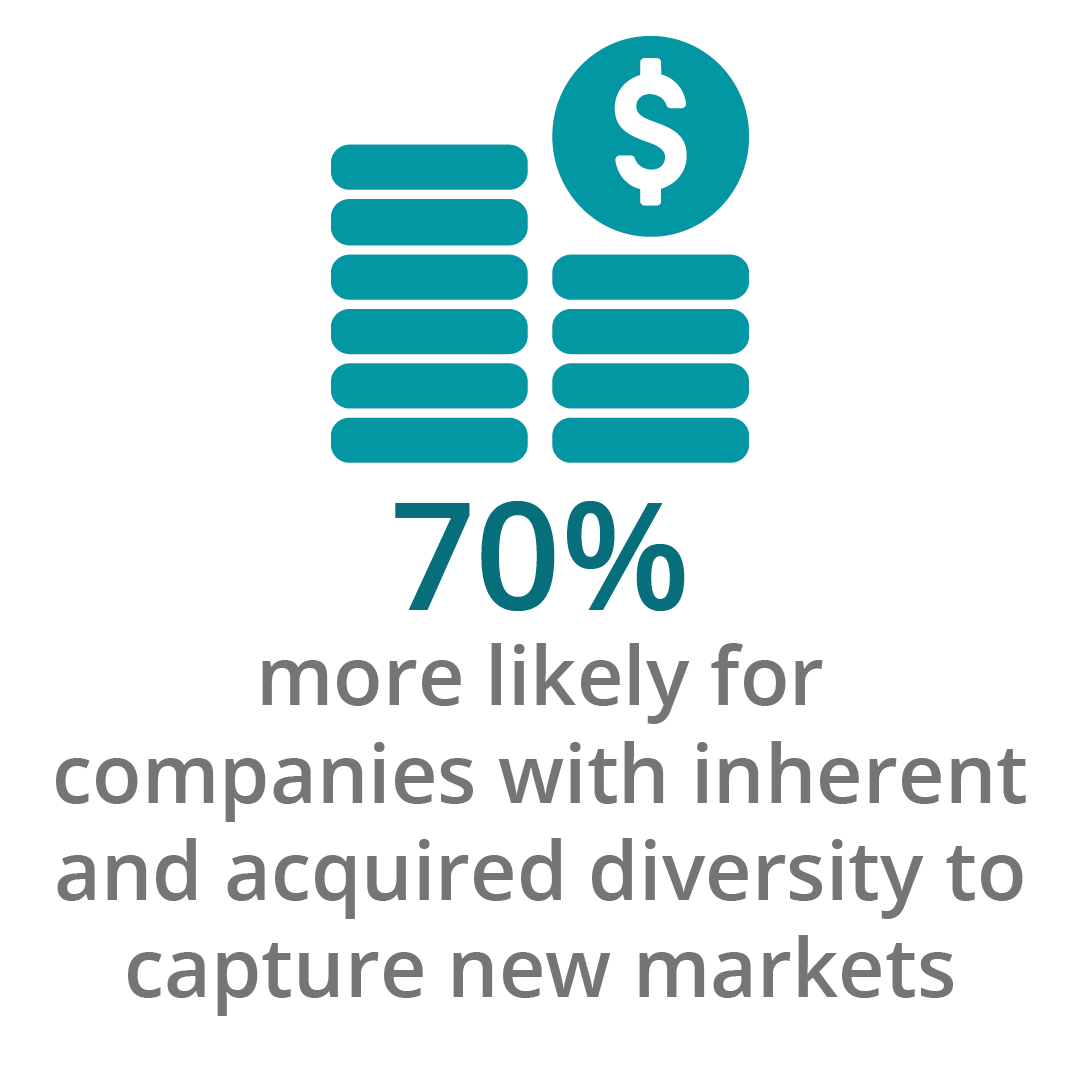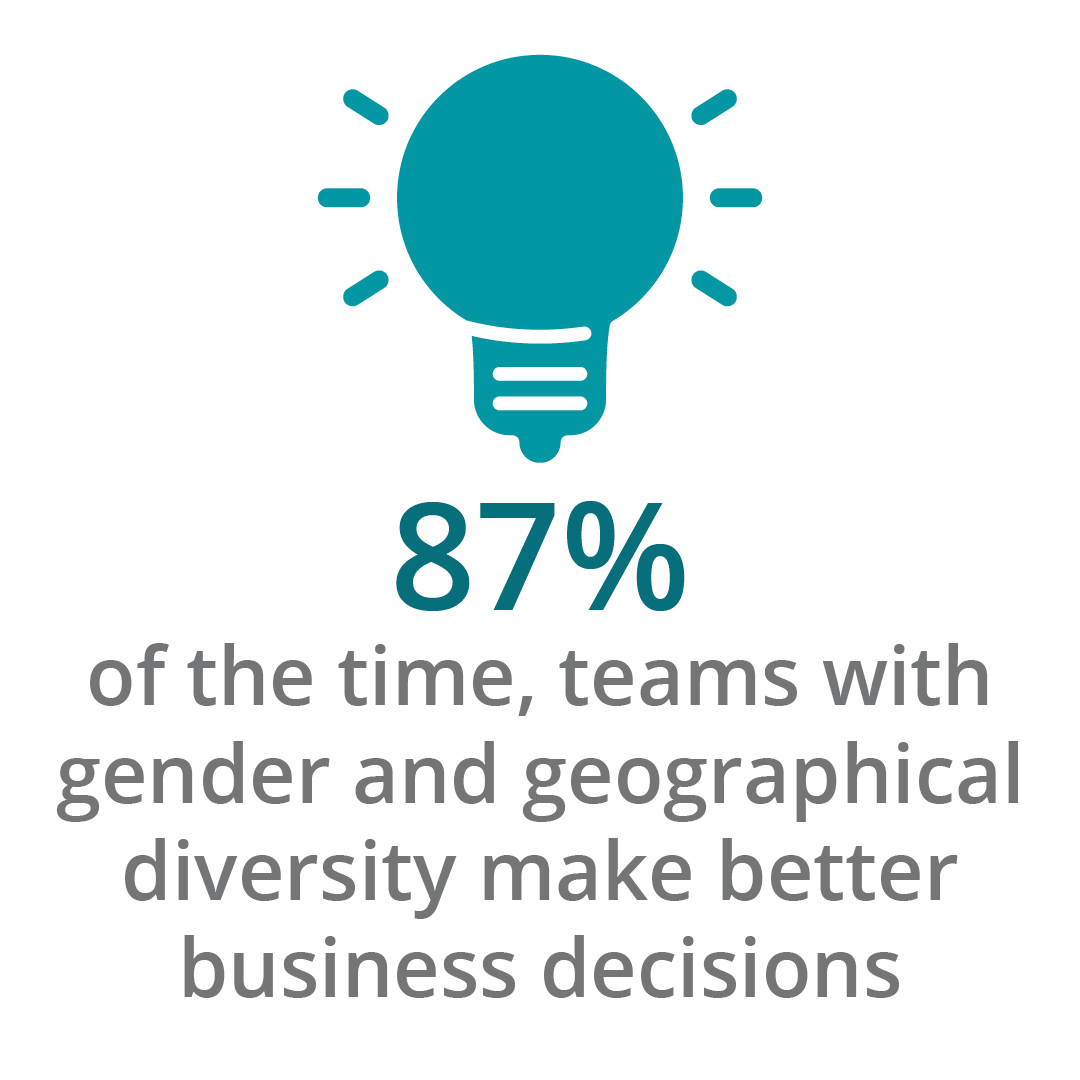Employer Resources
Employer Resources for Building Innovative Workplaces
While most businesses would agree that equity, diversity, and inclusion are important, there remain many perceived and actual barriers to shifting intention towards implementation of meaningful policies and practices. This shift is vital to effectively using the power and potential of the diverse demographics in Canada’s STEM economy.
How do equitable workplaces impact innovation?
Diversity includes both inherent traits you were born with, such as gender, ethnicity, and sexual orientation, as well as acquired traits gained from experience, such as working in different countries [2]. However, diversity alone does not create more innovative workplaces. This diversity must be combined with active inclusion strategies that focus on retention, promotion, and career progression of current employees. In companies where decisions are made by leadership teams of all men and then executed by gender-diverse organizations, this decision-making performs 15% worse than average and often leads to costly changing of minds [3]. In contrast, inclusion requires processes and policies that redefine organizational norms and focuses on integrating diverse talents into leadership positions. When diverse teams of genders, ages, and cultures both make and execute decisions, performance increases by up to 60% [3].
““Diversity is not a starting point. It is an outcome of an anti-racist thinking and an anti-racist advocacy and the way of doing things. You have to first do the inner work of unlearning and confronting your biases and assumptions, build an inclusive, equitable space before you can effectively hire and retain great people.””
Different businesses throughout Canada’s economic landscape face unique challenges. For example, small- to medium-sized businesses have a limited human resources capacity and lack the budget for extensive third-party consulting or lengthy series of team-wide training. These barriers mean that diversity recommendations from large businesses simply won’t work the same for all businesses. On the other hand, large business that have more financial resources can often face inertia in creating a culture change across multiple departments.
TGC collaborated with Deloitte Digital to design a do-it-yourself on-ramp for small- to medium-sized businesses to take steps towards diversifying their workplaces. Change Together documents the key successes and lessons learned over a 12-month collaborative period.
An important finding from Change Together was the importance of considering scope when implementing new processes and policies for equity, diversity, and inclusion: To maximize momentum, depth of collaboration and return on investment, TGC and Deloitte Digital recommend other workplaces implement a smaller number of related strategies (e.g. four) over shorter periods (e.g. six months).”
“Lack of diversity does not have a “turn-key” solution like “hire more women.” Diversity and inclusion require a cultural shift in the entire organization.”
The culture shift required to integrate diversity and inclusion into the workplace requires centering practices around all phases of the employment cycle: hiring, retention, and career advancement. In May 2019, the Government of Canada hosted a two-day Symposium on Women and the Workplace. Women and the Workplace emphasized the need for these diverse strategies throughout the employment cycle. TGC was and continues to be a committed and proud participant and contributor to this essential national conversation.
Strategies for Employers
The following strategies for hiring, retention, and career advancement are compiled from TGC and TWG’s Change Together report and the Government of Canada’s symposium Women and the Workplace.
-
Remove the impact of implicit bias from recruitment through tangible strategies. These approaches might include removing names and other identify signifiers from job applications (Change Together), incorporating skills and knowledge testing, standardizing interviews or questions, and "de-gendering" job ads to be mindful of pronoun and gendered noun use (Women and the Workplace).
Formalize a hiring partnership with a community initiative focused on marginalized groups within your industry. Traditional recruitment strategies do not equitably reach all potential candidates. Innovative approaches can support an organization in finding quality talent (Change Together).
Improve organizational accountability for recruitment and hiring by tracking the recruitment techniques and mapping them against the number of accepted resumes and new hires. Be transparent about these numbers within your organization (Women and the Workplace).
-
Accountability is key to changing workplace culture. Collect data, set targets, and establish accountability measures such as financial incentives or collective agreements (Women and the Workplace).
Retention also requires supporting current employees through flexible policies. Change Togethers may require accommodating family responsibilities, including child or elder care (Women and the Workplace), or preserving private spaces in the office exclusively for prayer, meditation, breastfeeding and/or breast-pumping (Change Together).
-
Supporting professional development and career advancement are essential to attaining diverse leadership teams and retaining current employees. These programs must go beyond passive methods like mentorship towards active sponsorship, transparency, and accountability.
Executive sponsorship programs entail senior leaders actively investing in the development and advocacy for junior employees from underrepresented groups within their circles of influence (Change Together).
Being transparent on information about pay practices and policies that reduce wage gaps allows employees to self-advocate as well as support others (Women and the Workplace).
Ask managers to justify their hiring and promotion decisions and assign specific responsibilities for diversity to improve accountability (Women and the Workplace).
““[the higher concentration of women on staff has] helped nurture a culture of women supporting women and women helping each other get higher in our careers””
References
[1] United Nations x BCG Report, 2022
[2] Harvard Business Review, 2013
[3] Cloverpop, 2023





